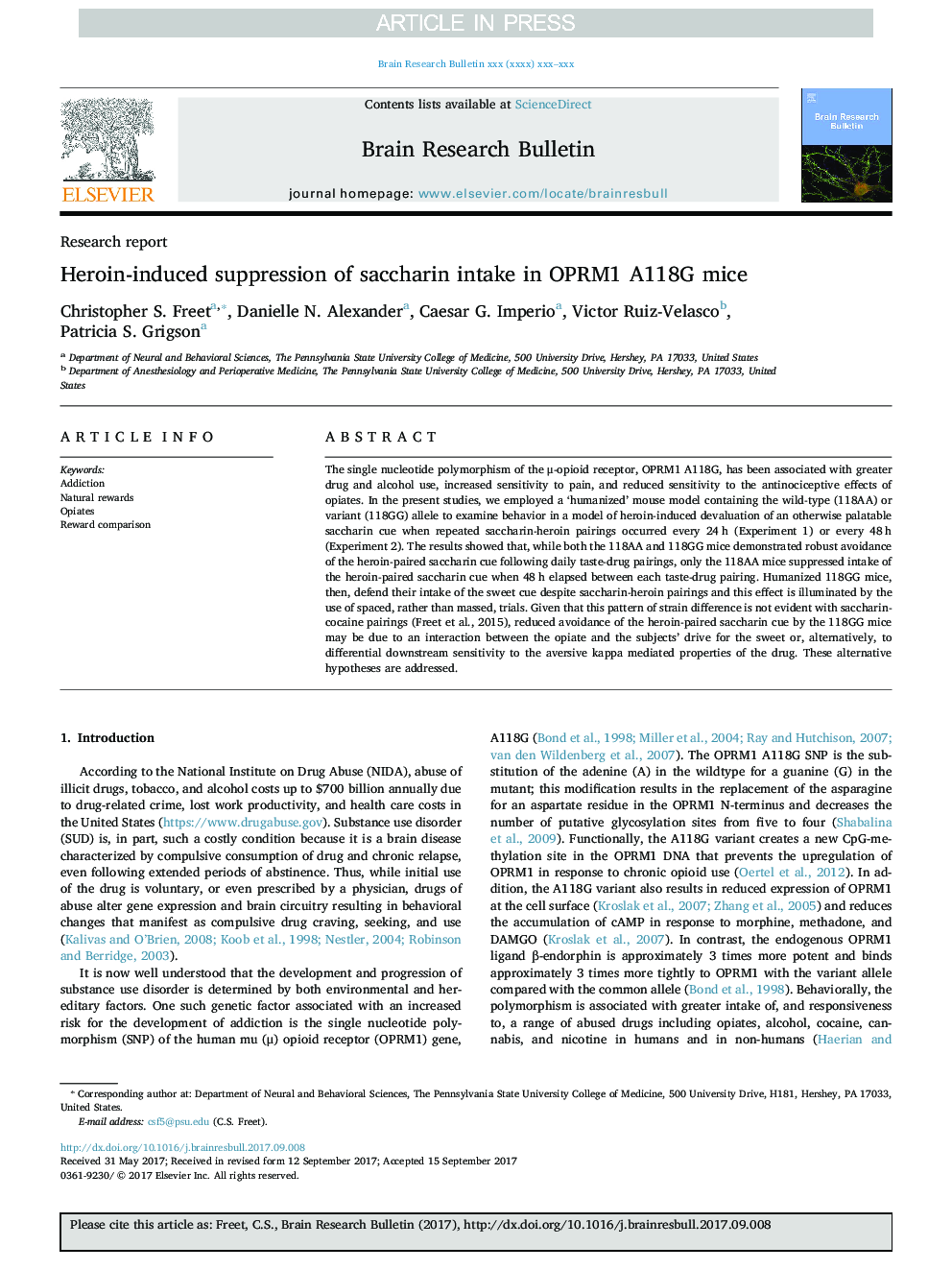| Article ID | Journal | Published Year | Pages | File Type |
|---|---|---|---|---|
| 8838961 | Brain Research Bulletin | 2018 | 7 Pages |
Abstract
The single nucleotide polymorphism of the μ-opioid receptor, OPRM1 A118G, has been associated with greater drug and alcohol use, increased sensitivity to pain, and reduced sensitivity to the antinociceptive effects of opiates. In the present studies, we employed a 'humanized' mouse model containing the wild-type (118AA) or variant (118GG) allele to examine behavior in a model of heroin-induced devaluation of an otherwise palatable saccharin cue when repeated saccharin-heroin pairings occurred every 24 h (Experiment 1) or every 48 h (Experiment 2). The results showed that, while both the 118AA and 118GG mice demonstrated robust avoidance of the heroin-paired saccharin cue following daily taste-drug pairings, only the 118AA mice suppressed intake of the heroin-paired saccharin cue when 48 h elapsed between each taste-drug pairing. Humanized 118GG mice, then, defend their intake of the sweet cue despite saccharin-heroin pairings and this effect is illuminated by the use of spaced, rather than massed, trials. Given that this pattern of strain difference is not evident with saccharin-cocaine pairings (Freet et al., 2015), reduced avoidance of the heroin-paired saccharin cue by the 118GG mice may be due to an interaction between the opiate and the subjects' drive for the sweet or, alternatively, to differential downstream sensitivity to the aversive kappa mediated properties of the drug. These alternative hypotheses are addressed.
Related Topics
Life Sciences
Neuroscience
Cellular and Molecular Neuroscience
Authors
Christopher S. Freet, Danielle N. Alexander, Caesar G. Imperio, Victor Ruiz-Velasco, Patricia S. Grigson,
